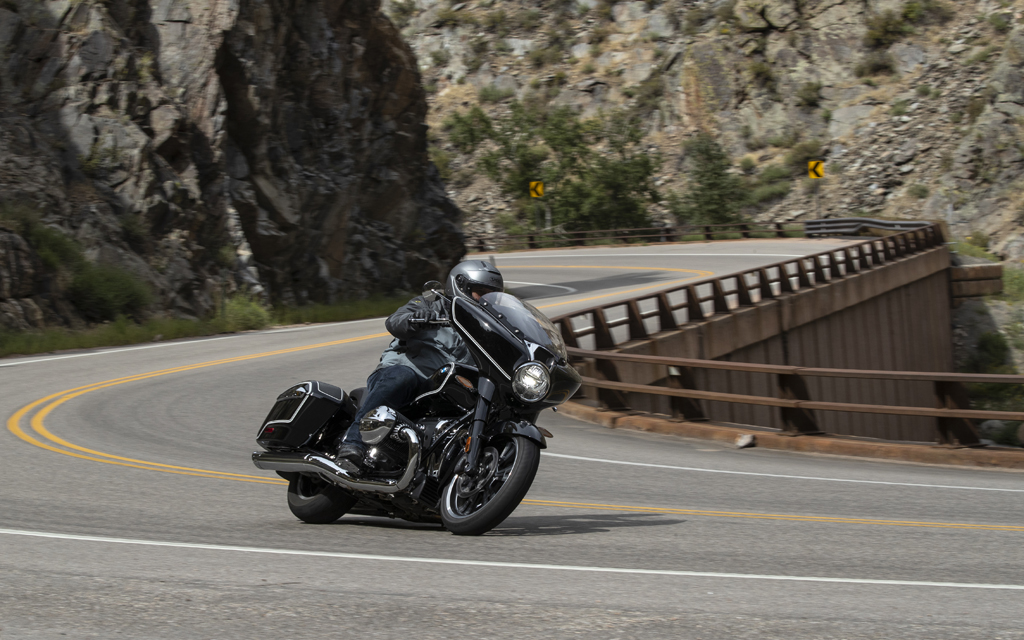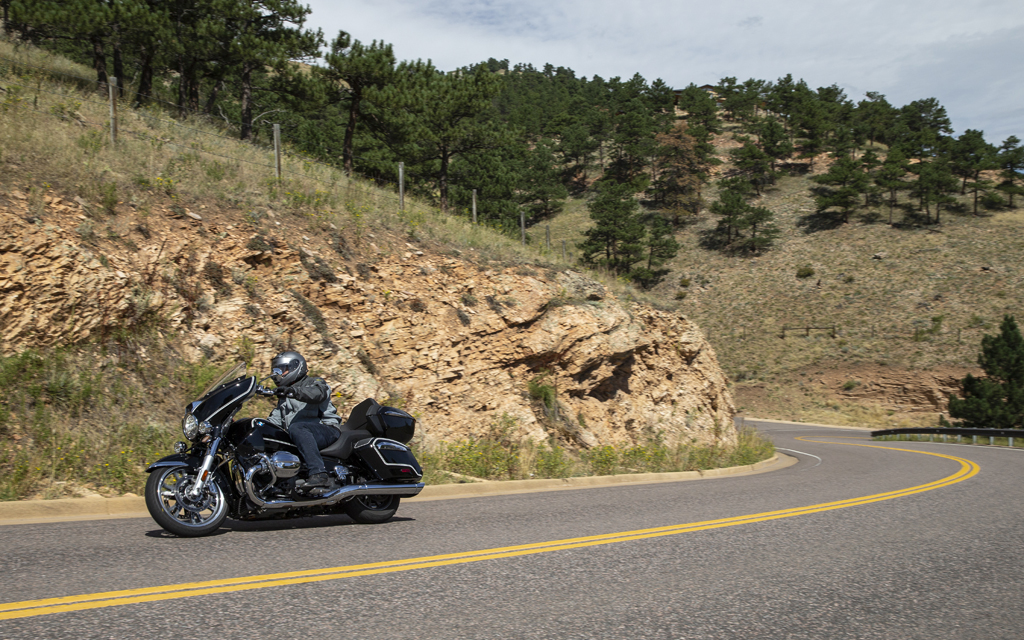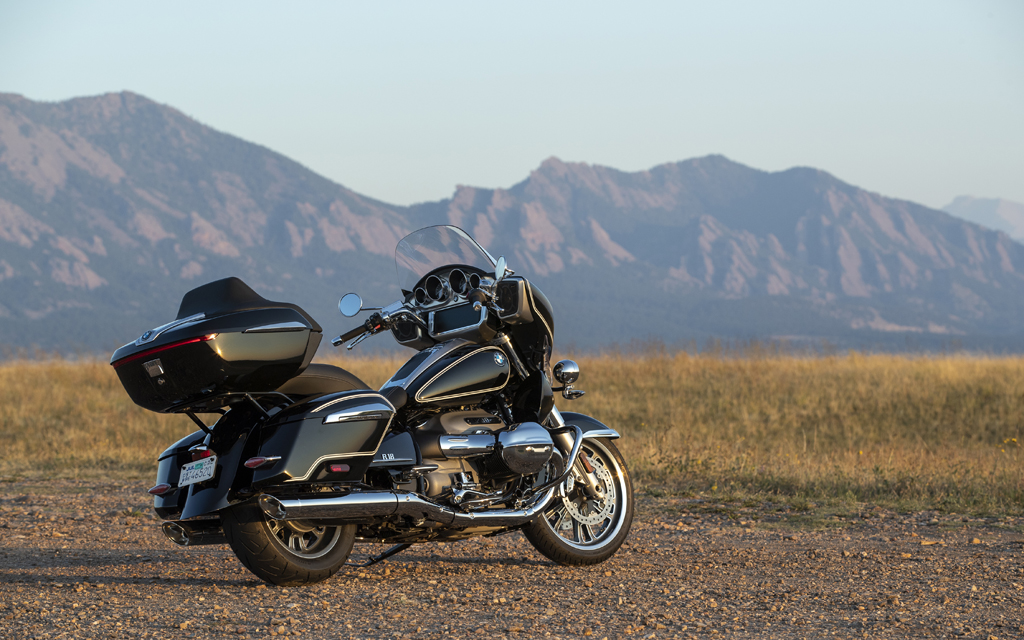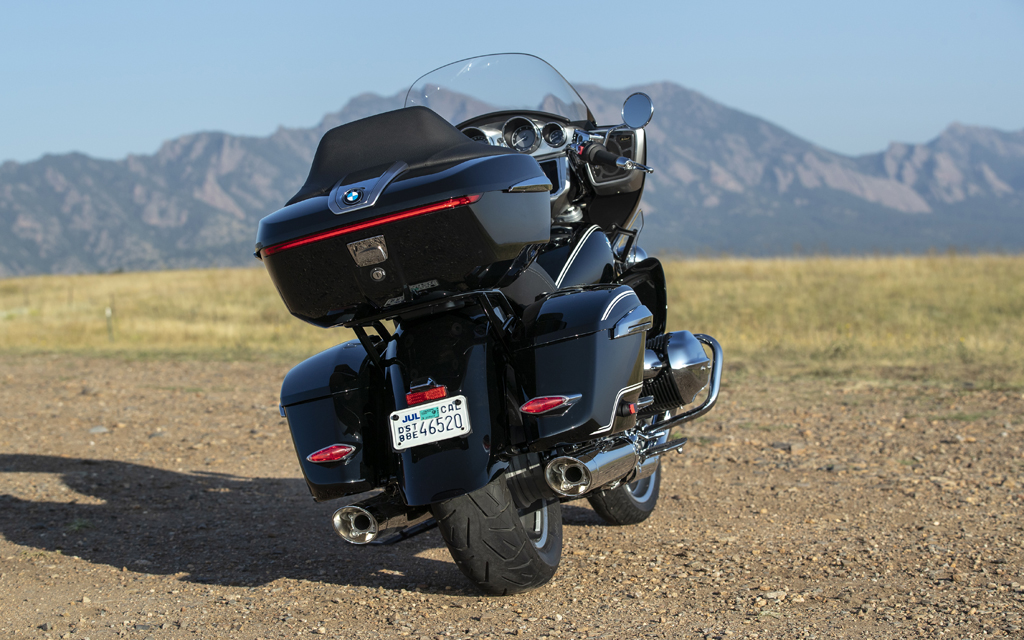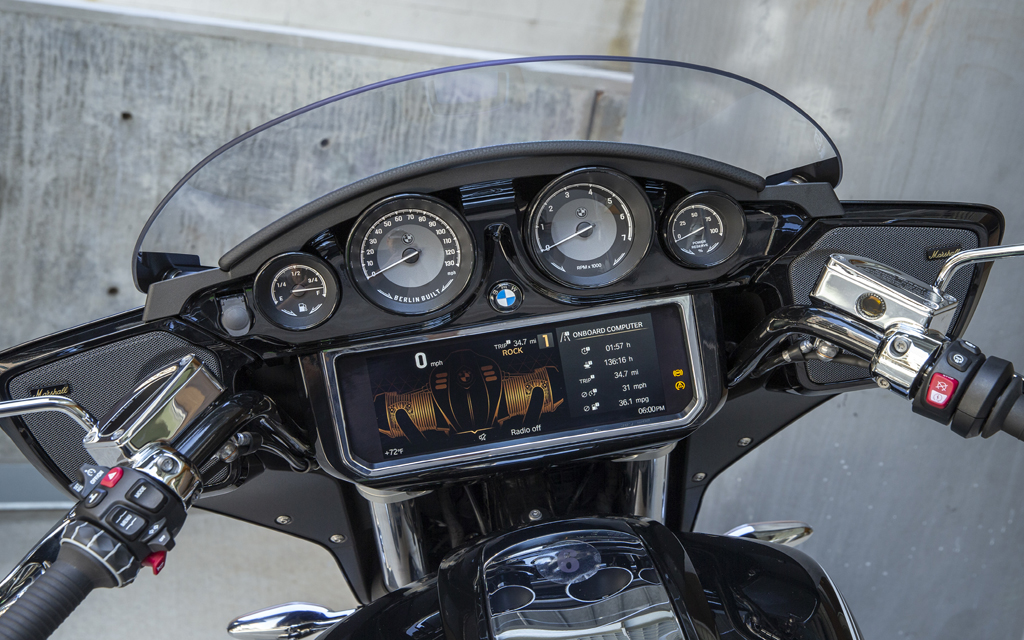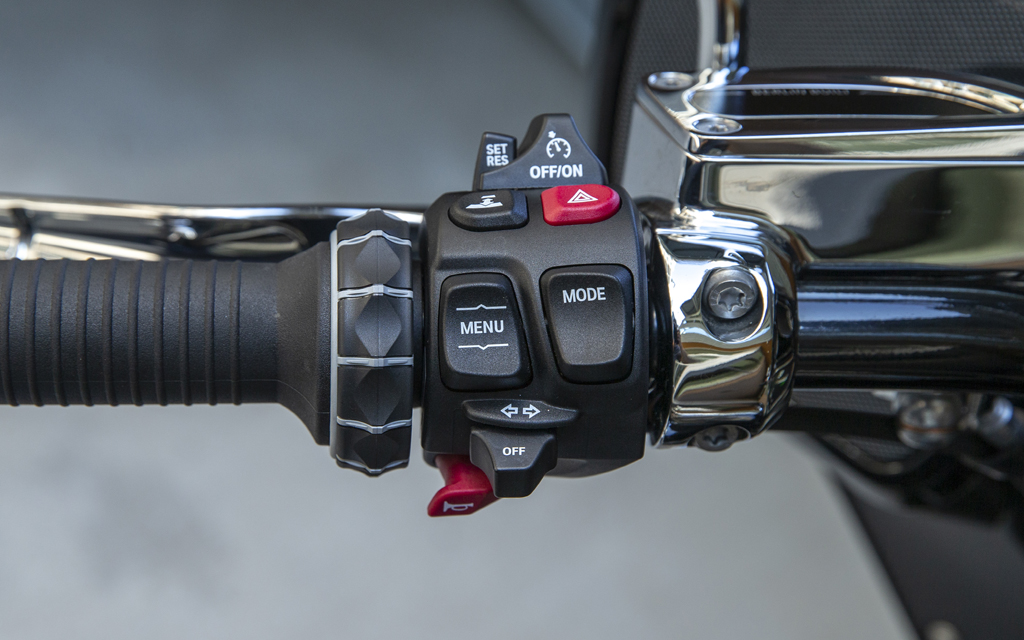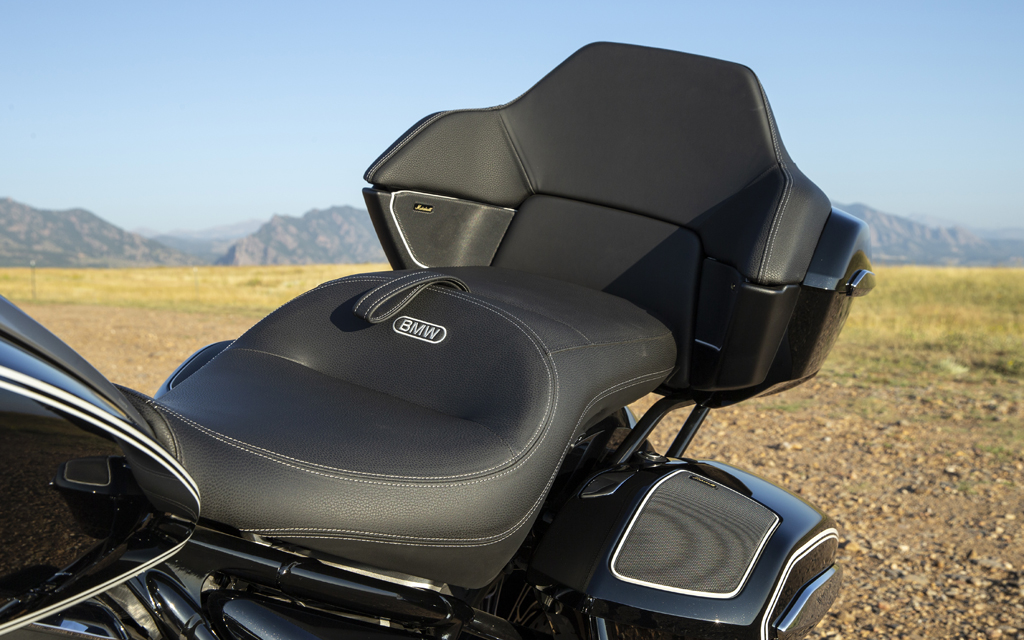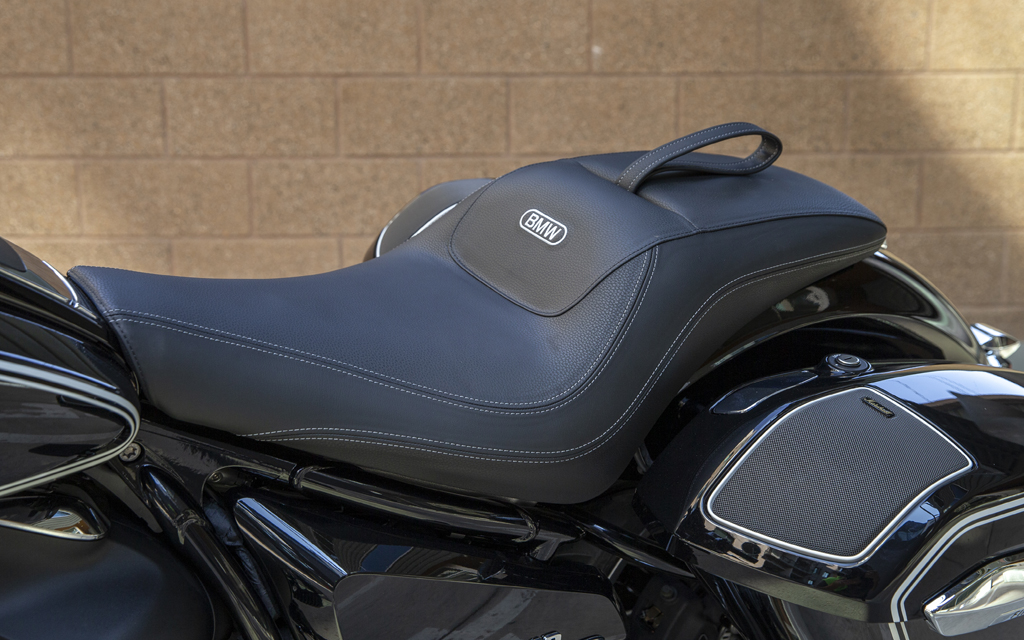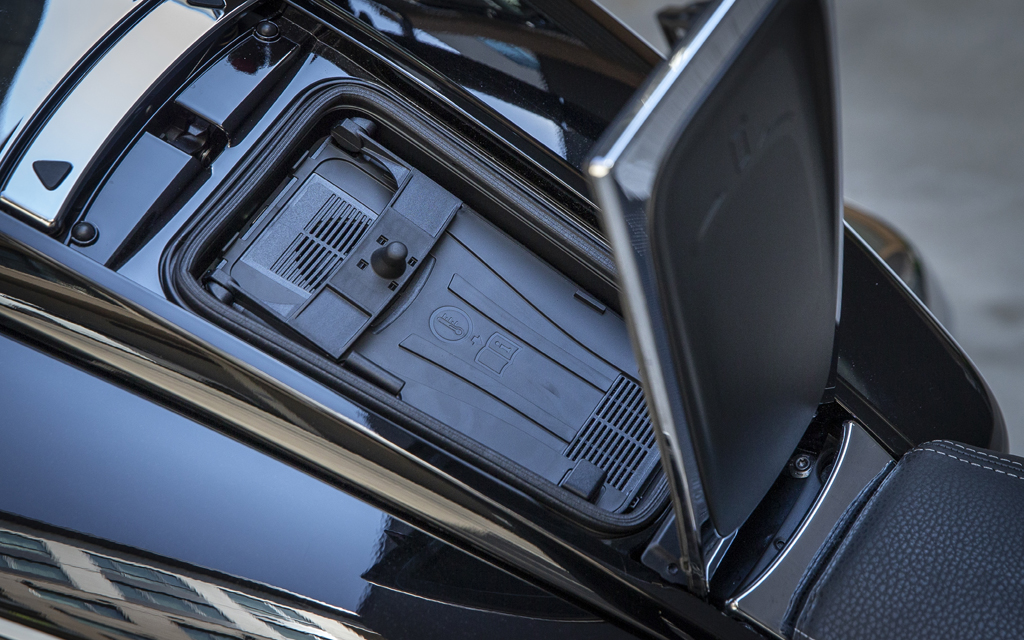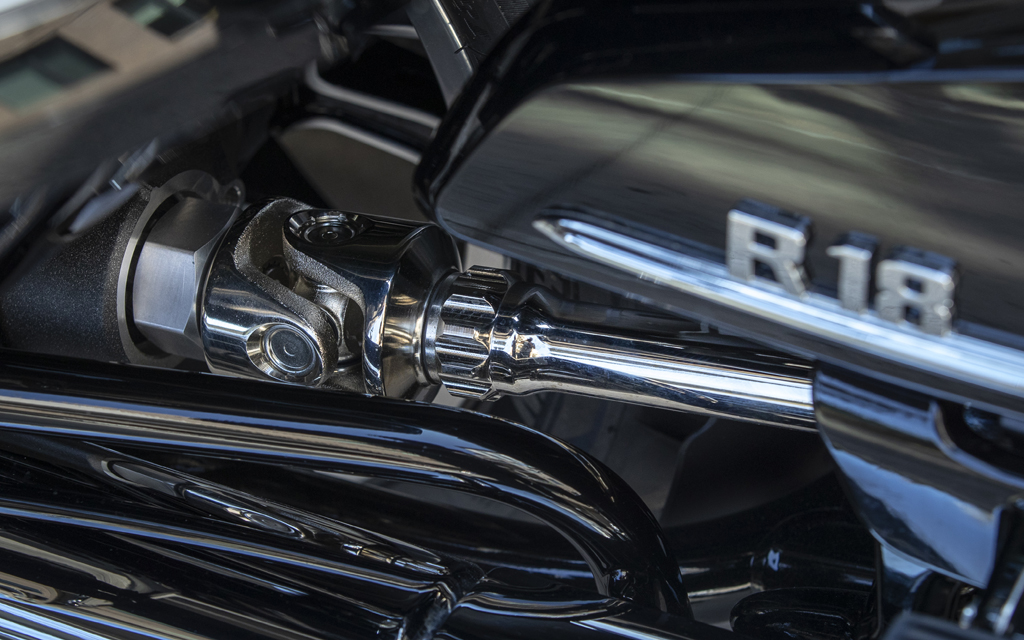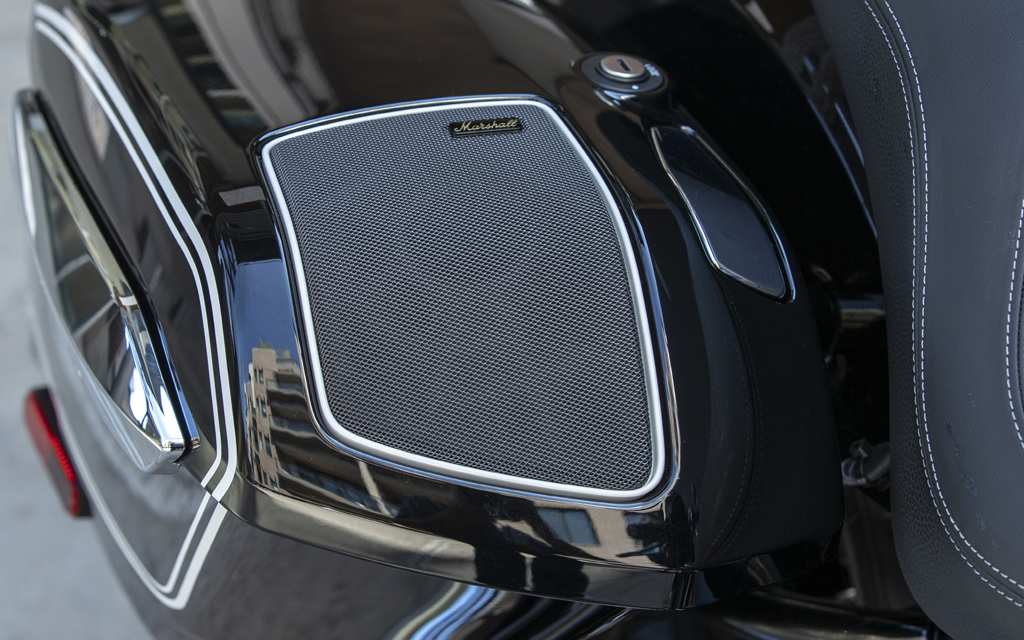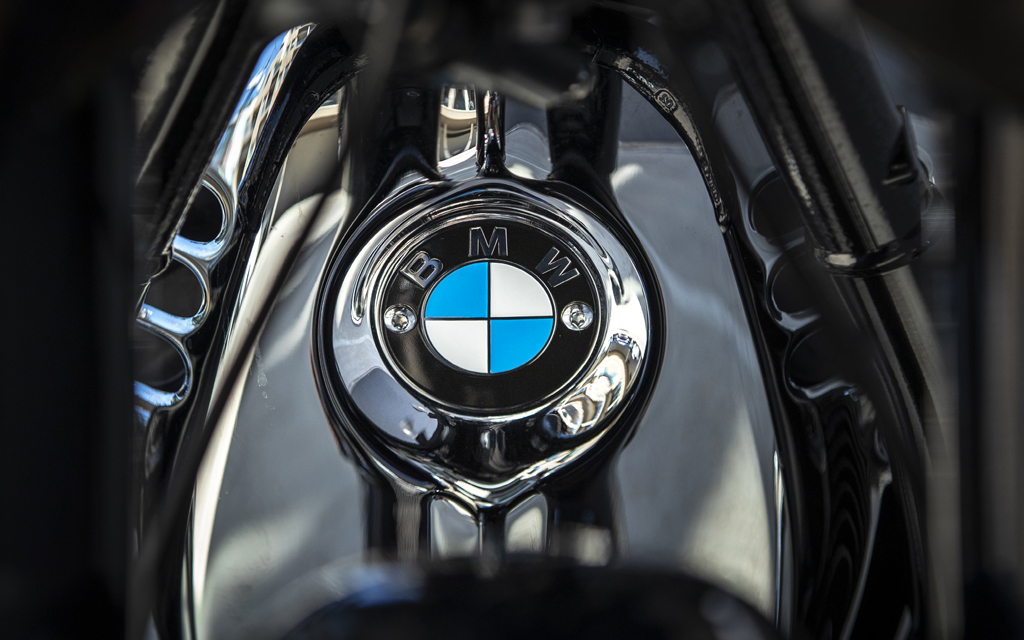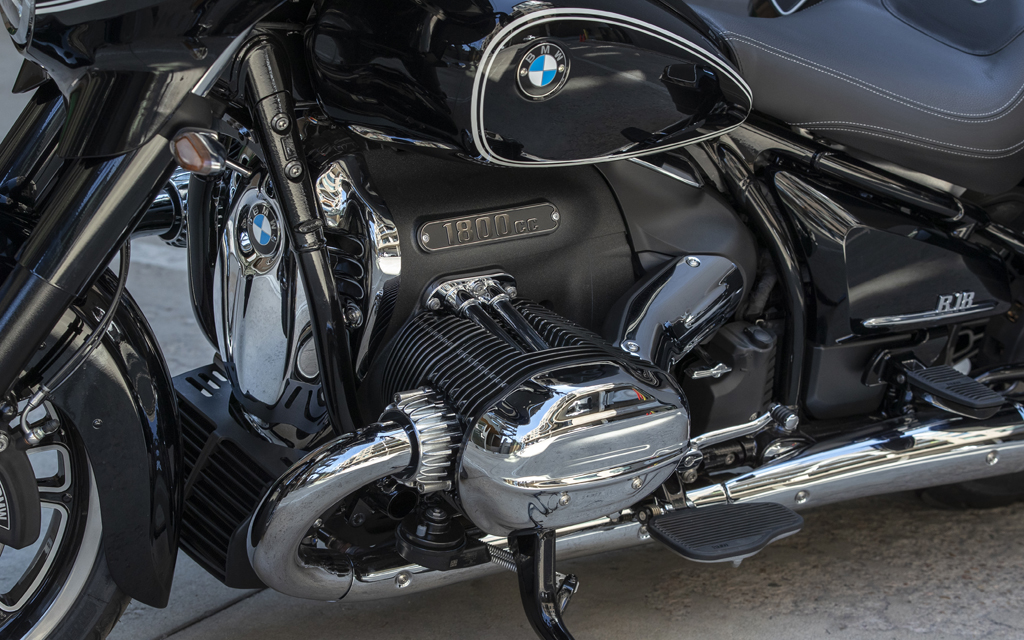*This article was published in Vol. 51 No. 8 of Cycle Canada digital magazine.
The long-legged R18
To riders dreaming of unhurried trips to the Grand Canyon and Lake Louise, BMW offers a new pair of R18-derived machines for 2022 : the R18B bagger and the R18 Transcontinental luxury touring cruiser. We got to ride them in Colorado.
Denver, Colorado.
Considering the well-documented case of Harley-Davidson sales plunge and the almost unanimous defection from anything cruiser related by most of the brands who used to produce them, how could anyone be blamed for questioning the future of this motorcycle genre? To this existential question, BMW surprisingly answered in 2021 by jumping with enthusiasm on a ship most thought was sinking with its big R18 cruiser. And now, for 2022, the Munich brand doubles down with a pair of new touring models based on the same platform.
For some reason, they seem to like betting against the odds over at BMW. So when the time came for the press to ask questions during the North American launch of the new R18B ($26,945) and R18 Transcontinental ($29,500) in Denver, I inquired about the logic behind this interest with the world of cruisers, precisely at this most challenging time for the genre.
The answer was as short as it was undramatic : sure, the market is down, but they don’t really need to sell that many. Well, relatively to what Harley-Davidson now sells, that is, meaning that snatching just a few percentage points of the current cruiser market would be perfectly satisfying to them. The R18B and Transcontinental’s goal, then, isn’t to woo every potential Street Glide or Roadmaster buyer away from Harley or Indian. Just a small portion of them. The new models’ mission is also to keep BMW customers with BMW should the idea of going the touring cruiser way cross their mind.
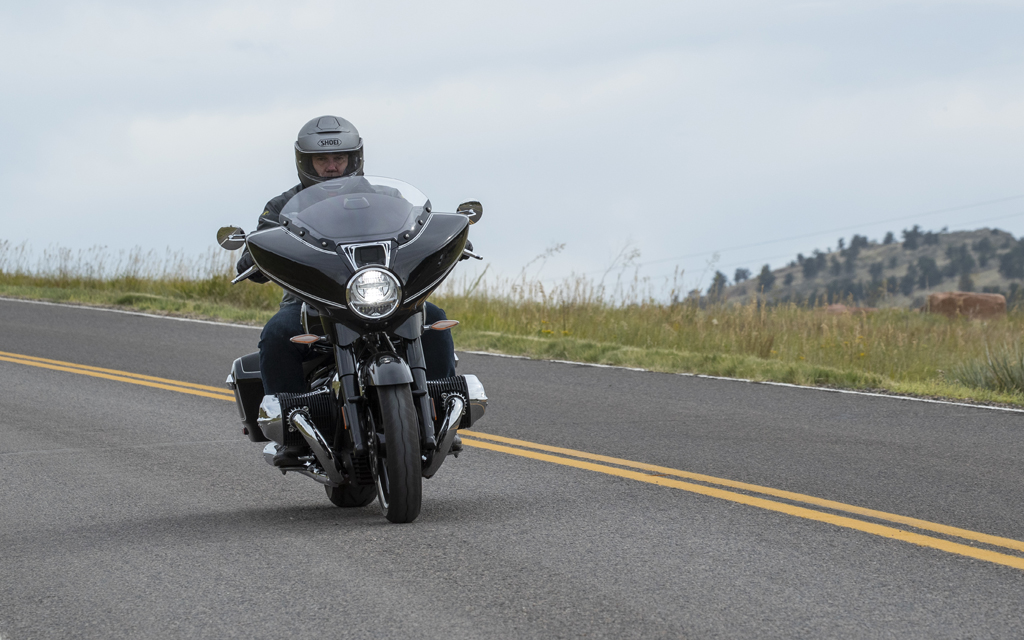
BMW’s logic and calculations are important as they explain both the new R18B/T’s modest level of innovation and, let’s be frank, underwhelming design. In most other cases, characterizing new models as such would equate to quite a negative statement. But in this case, since the goal of the exercise is apparently limited to joining a category to capture a few sales from rival brands, the familiar and recognizable style of the R18B/T duo does make sense. And so, by design, the matter-of-course look of their batwing fairing and hard saddlebags voluntarily dispenses a sense of déjà vu.
All that being said, it would be unfair not to point out the —important— exception to the R18B/T overt reuse of the current bagger/touring cruiser formula : the gargantuan and beautiful sculpture that is their air and oil-cooled 1802 cc Big Boxer. According to BMW, it is the exact same 91 hp motor that the R18 uses without any modification to the 6-speed gear box or final gearing. That claim is verified when the monster engine is started as its very particular mechanical signature is also experienced on the R18B/T. The deep throaty sound, the heavy pulse, the strong low rpm acceleration and the unique torque reaction that rolls the bike to the left after a blip of throttle in neutral: all are present. However, all these characteristics feel somewhat less intense on the R and Transcontinental than on the R18 cruiser, something I attribute to the R18B/T saddlebags preventing the sound of the mufflers to arrive directly to the rider’s ears, and to the new bikes’ considerably higher mass absorbing part of the engine pulse.
Speaking of mass, if there’s one aspect of the R18B/T that dominates the first contact with them —and never fades away—, it’s how extraordinarily heavy they are. The numbers tell the tale : 397 kg for the B and, for the Transcontinental, 426 kg or a few dozen pounds shy of 1000 lb. Heavier production motorcycles essentially don’t exist. Now, bikes of this type being heavy isn’t news and I knew a solid pull would be needed when I’d first lift the Transcontinental off its stand to leave our posh Denver hotel. Or so I thought. The initial effort was about what I expected, but I did get caught off guard when the inertia of all that mass pushed the whole machine passed vertical, which demanded another effort to stop it and then bring it back straight. Throughout the entire time I spent on the bagger and especially the Transcontinental, that episode never faded away, but rather forced me to concentrate and be precise during slow maneuvers. Again, no one’s implying competing models aren’t heavy as well and don’t necessitate this type of attention. But the fact is, to be operated safely, the Transcontinental in particular demands an adequate level of experience and physical strength from its rider, especially so when ridden with a passenger and a packed set of luggage.
As for the R18B, without the added weight of the Transcontinental’s rear trunk, it isn’t as daunting during slow and tight maneuvers, but it remains properly massive nonetheless and still requires a solid level of experience from its rider.
Another consequence of the imposing mass of the new models is the impact it has on their performance. From fun on the R18, accelerations are downgraded to decent on the R18B and essentially sluggish on the R18 Transcontinental. Since neither of these bikes is making any promise related to speed, their unimpressive performance level isn’t really a disappointment, nor is it unusual for the category. On the plus side, it can’t be forgotten that the riding experience the R18B/T offer is enriched by the Big Boxer’s charming character.
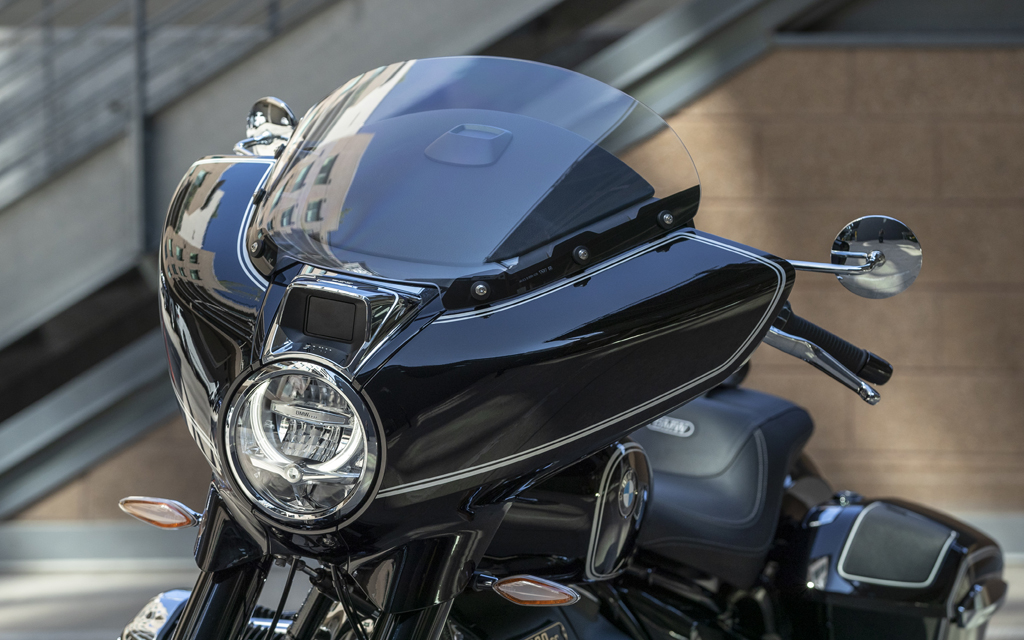
Great comfort over long distances is expected of bikes like the R18B and R18 Transcontinental, but both are based on the R18 cruiser which has been widely criticized for the cramped ergonomics caused by the short distance between the low seat and centrally mounted footpegs. Fortunately, even though their big protruding cylinders force the floorboards to also be located centrally, that criticism doesn’t apply to the R18B/T. That’s because their considerably higher seat opens up the angle of the rider’s legs and eliminates the cramped feel of the R18 cruiser ergos. Since the seats are higher because of the considerably increased thickness of their foam, their comfort is pleasantly improved. And because the Transcontinental’s seat is thicker than the R18B’s, it’s the best choice for riders intending to travel, even more so as its increased height opens up the riding position even more. The Transcontinental’s advantage when traveling is further accentuated by its higher windshield and articulated side vents that either send fresh air toward the rider or block more wind. The only drawback of the high windshield is that its edge falls right at eye level for most riders. It’s not a terrible nuisance, but in the case it would be, the option of installing the R18B’s lower screen can is there. The seats are also interchangeable, meaning a rider wishing to make an R18B bagger as travel-capable as possible could easily achieve that by installing the Transcontinental’s seat and screen.
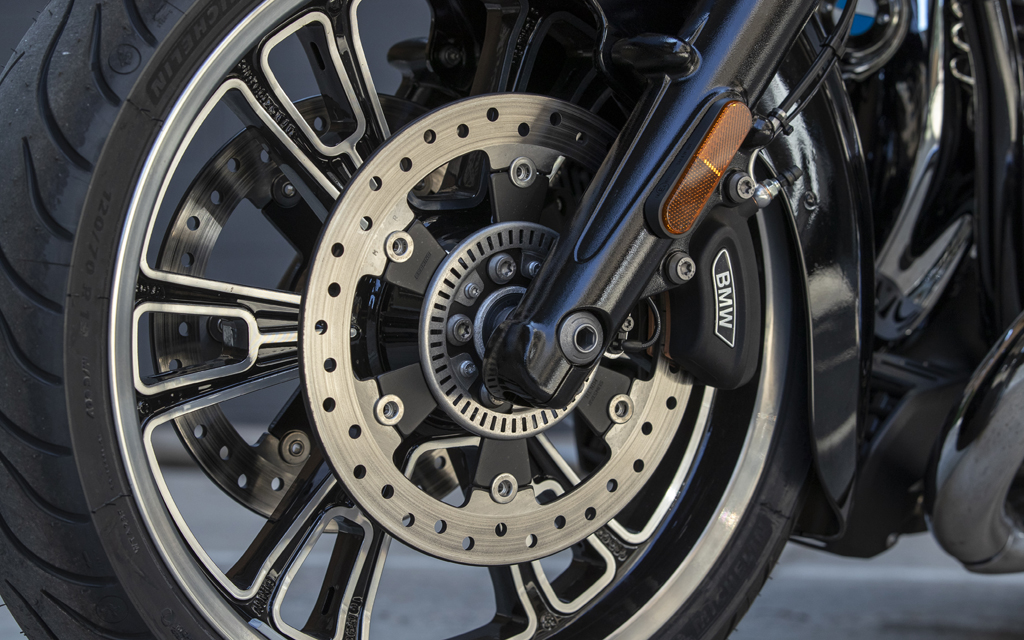
While the R18 cruiser controversial ergonomics aren’t an issue on the R18B/T thanks to their much more relaxed riding position, one aspect of the new bikes ergos still irritated everyone who tested it during the launch, myself included. The issue was that reaching the front part of the heel-and-toe shifter with the tip of my riding boot proved to be unusually difficult. A weird inward twist of the left foot was required for each shift. Arriving at our lunch break, I had had enough and took a look under the left cylinder to understand how this could be. It turns out the front part of the shifter is adjustable and for some reason was in an awkward position. A minute of fiddling with it was all it took to fix the problem. It should have been adjusted properly on all bikes before the test, but whatever. Since many journalists didn’t ask for that adjustment to be made or even realize one was possible, that criticism may very well be part of several R18B/T reviews. But just know one adjustment is all it takes.
BMW clearly established it never intended to reinvent the wheel and offer a transformational bagger/touring cruiser combo with its new R18B and R18 Transcontinental. And just as clear is the fact that the German brand didn’t transform their respective category. But not being transformative doesn’t mean not being good and the fact is also that, while not exceptional, both these new BMW really represent quite a competent bagger/touring cruiser combo. The behave solidly and precisely on the road, steering becomes light as soon as they’re in motion, suspensions work well and the combined braking system is as powerful as it is easy to modulate. Their price isn’t unreasonable (although beware of options that can bloat it) and their long list of equipment includes goodies like a good quality Marshall audio system and adaptive cruise control.
The most important achievement of the R18B and R18 Transcontinental, however, is that the combination of all their characteristics allow them to offer perfectly legitimate versions of what American Luxury Touring is about. They are meant to travel over long distances in comfort and in no rush, and are aimed at riders who enjoy admiring vistas fly by to the rumble of a large Twin. To traditional aficionados of baggers and luxury touring cruisers, they may not represent the most cutting edge or traditional of choices. But they absolutely are options that deserve to be considered.
